When MoMA celebrates its 95th anniversary
What valuable insights can we gather by analyzing nearly 400 artists who showcased their work in 10 notable collective exhibitions dedicated to Latin American art?
On November 7, 1929, the MoMA - Museum of Modern Art in New York opened its doors, just nine days after the biggest stock market crash. If the latter marked a before and after in the financial world, the MoMA has been the spearhead of the world art system for almost a century.
As regards Latin American art, things are the same since the MoMA has managed, over this time, to amass one of the best and most significant Latin American collections in the world. A collection started in 1935 with the donation of a work by the Mexican artist Orozco by Abigail Greene Aldrich Rockefeller, wife of the financier and philanthropist John D. Rockefeller Jr., followed a year later by two great Riveras. Since then, this Latin American collection has continued growing in number and quality.
However, when displaying these collections, specific questions deserve to be answered with data: Has the presence of female and male artists been equal? What countries do they come from, and which are the best represented? Who are the artists who have participated in the most exhibitions? Who has had a solo exhibition dedicated to them? Whose artists have been collected the most?
On this occasion, developing the data from scratch from the MoMA website, we have analyzed 10 relevant collective exhibitions with which the museum has promoted Latin American Art in the years 1942, 1943, 1967, 1981, 1993, 1998, 2004, 2007, 2019 and 2023 (collective exhibitions dedicated to disciplines such as architecture or design and a single country have not been taken into account).
The count of female and male artists
Upon analyzing the collected data, we identified 390 artists from 15 Latin American countries who participated in these exhibitions. Out of this total, only 63 were women, representing a mere 16%, while men dominated with 327 artists, or 84%. This stark imbalance clearly signals an urgent need for improved female representation in the arts.


The number of Artists by Country
Drawing inspiration from a theory of the late Argentine collector and philanthropist Daniel Levinas, who articulated in one of his last interviews with Arte en Diálogo that “art is worth what a country is worth,” we can see that MoMA celebrates the vibrant contributions of artists from Brazil, Argentina, and Mexico, highlighting their essential value while reminding us of the untapped potential of art from the Dominican Republic, Costa Rica, Ecuador, and Guatemala.

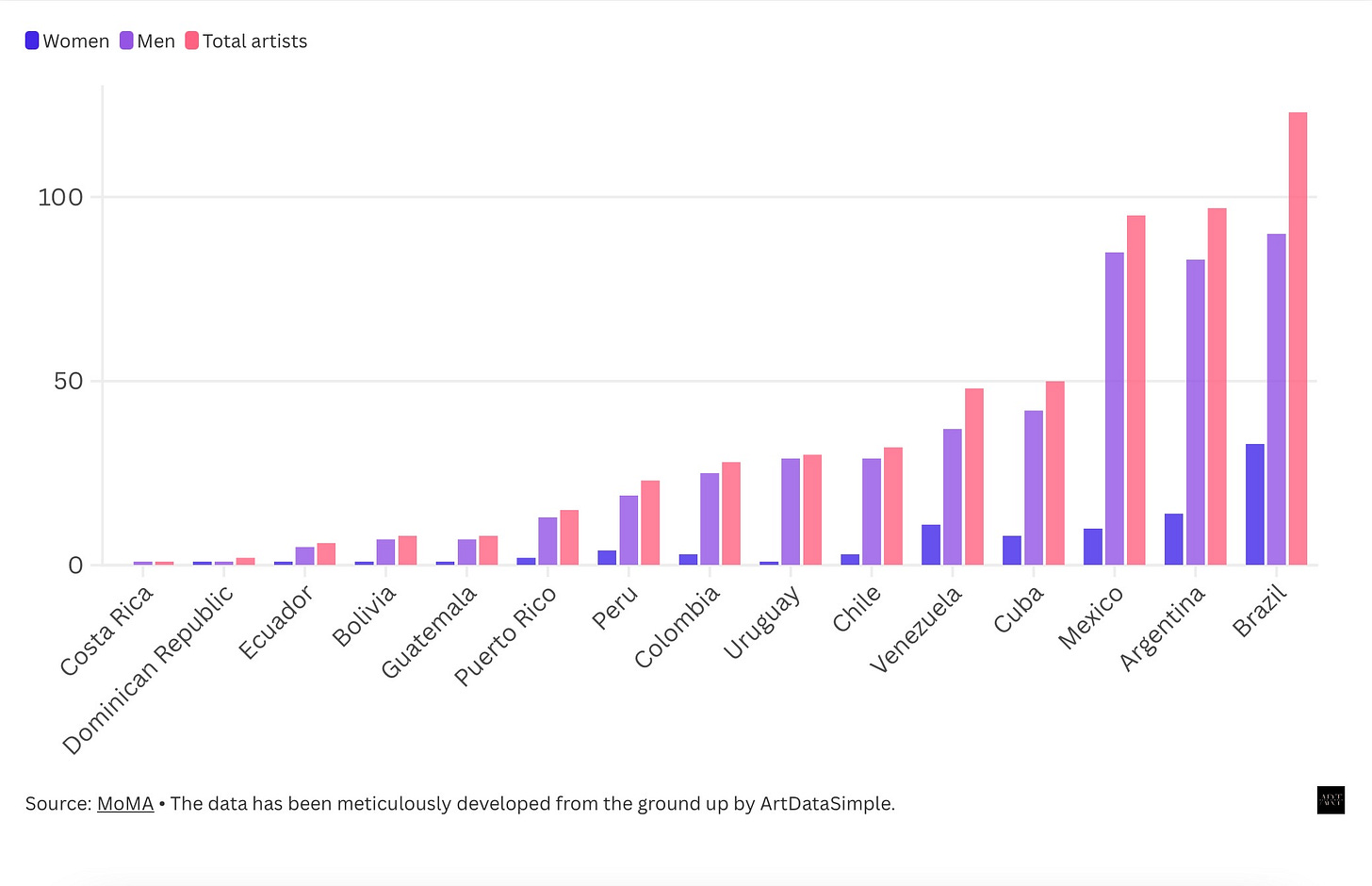
The number of artists from each country in every exhibition
Argentina, Brazil, Cuba, and Mexico have had artists featured in nine of the ten exhibitions. Following them are Chile and Uruguay, with eight exhibitions each, and Colombia, which has participated in seven. Regarding the highest number of artists from a single country in an exhibition, Mexico had 46 artists in the 1943 exhibition, while Argentina had 29. Additionally, it's noteworthy that Argentina and Brazil each had 24 artists in two separate exhibitions held in 1993 and 2004, respectively.
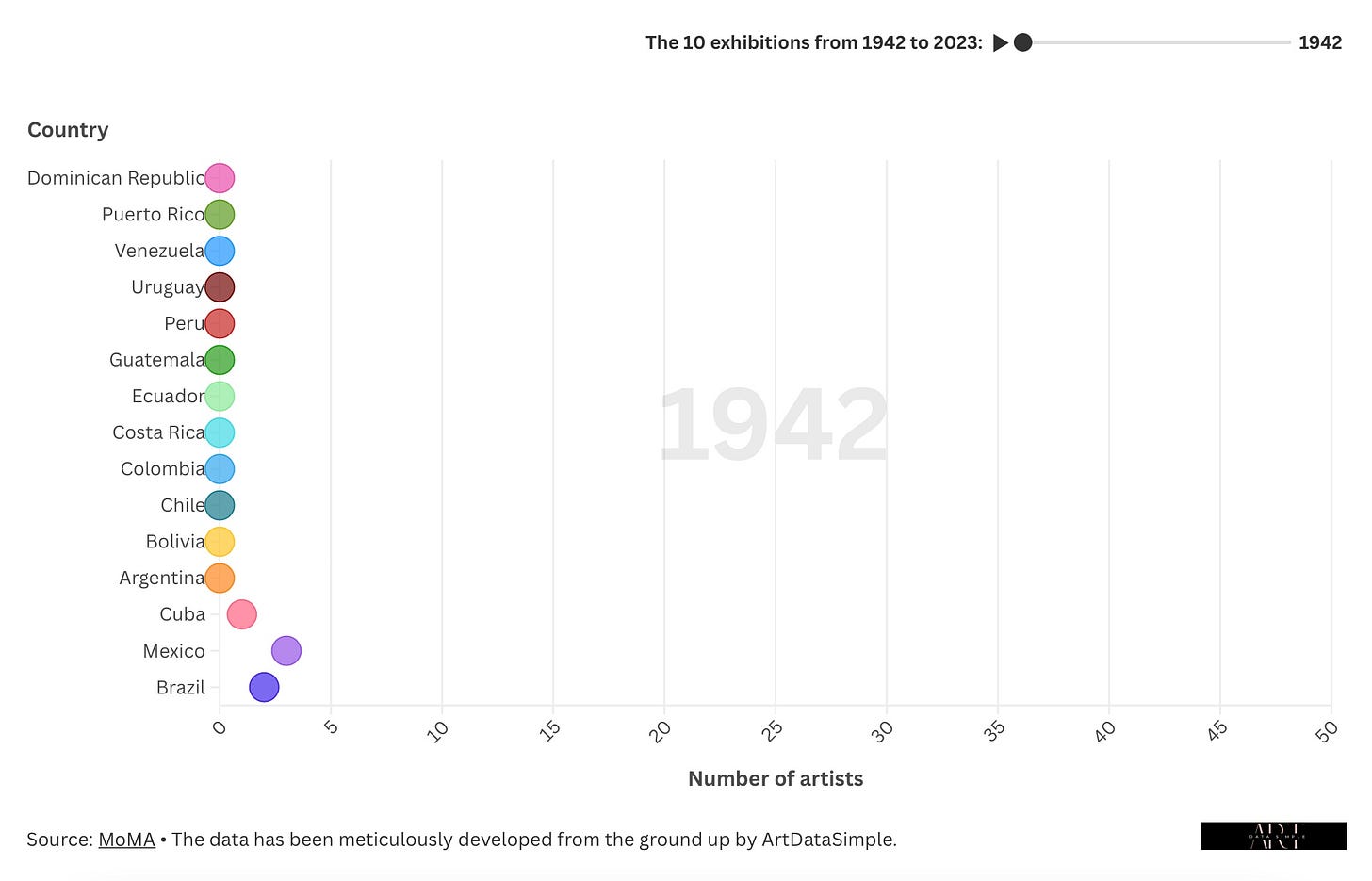
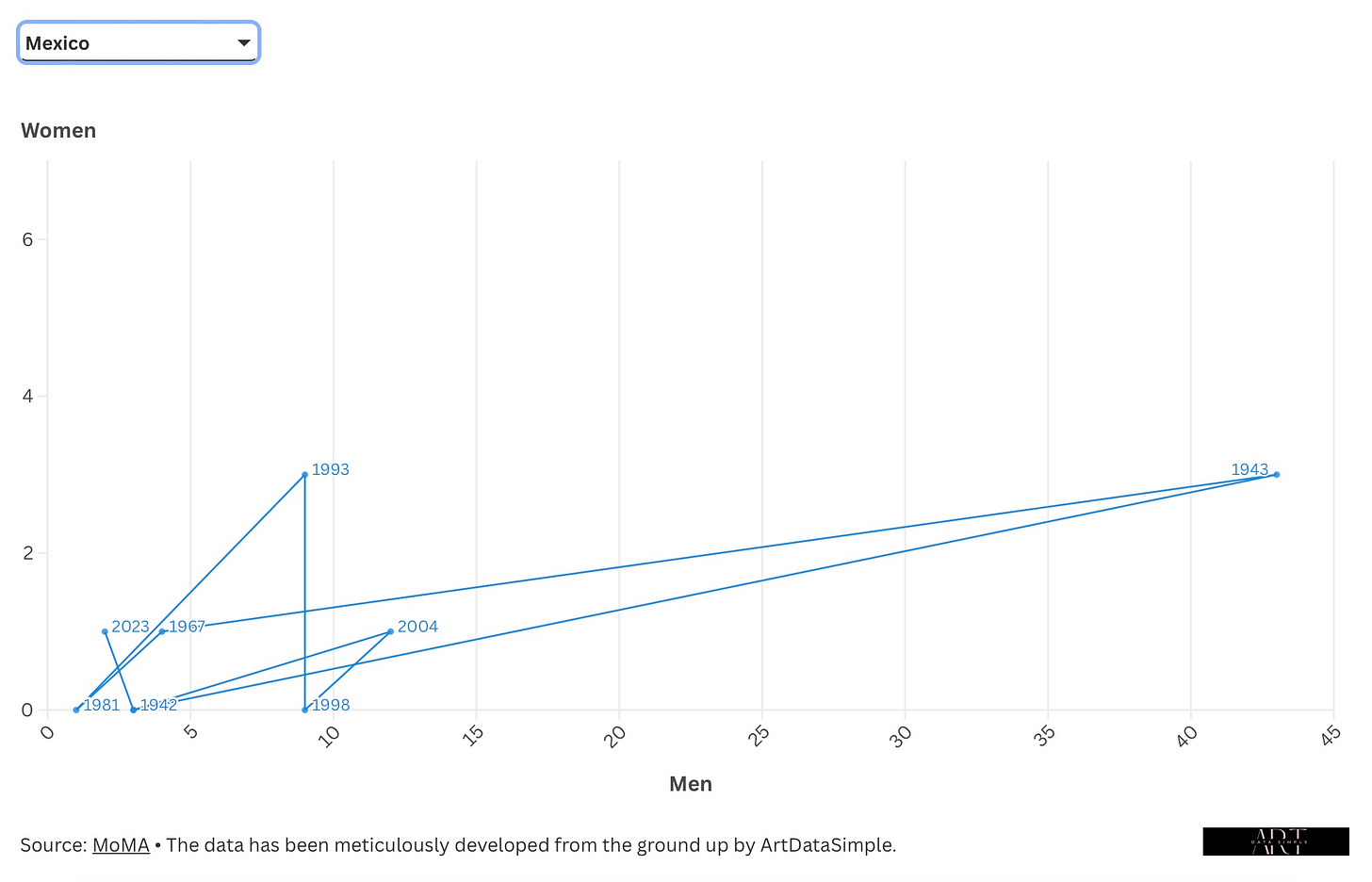
Artists with the highest participation in the ten exhibitions
In this exclusive group, Uruguayan artist Joaquín Torres-García undoubtedly deserves a prominent place, as his works have been showcased seven times. He is closely followed by Mexican artists Diego Rivera and José Clemente Orozco, who have each participated six times. To find the first female artists, we look to fifth and fourth place, where we find Venezuelan artist Gego and Cuban artist Amelia Peláez, respectively. The remaining artists can be found in the list below.

The 10 artists with the highest level of participation
Let’s examine the complete history of exhibitions at the museum. The new additions include Venezuelan artist Marisol Escobar, Cuban artist Félix González-Torres, Argentine artist Lucio Fontana, and Mexican photographer Manuel Álvarez Bravo. Once again, José Clemente Orozco and Diego Rivera are among the prominent names featured.
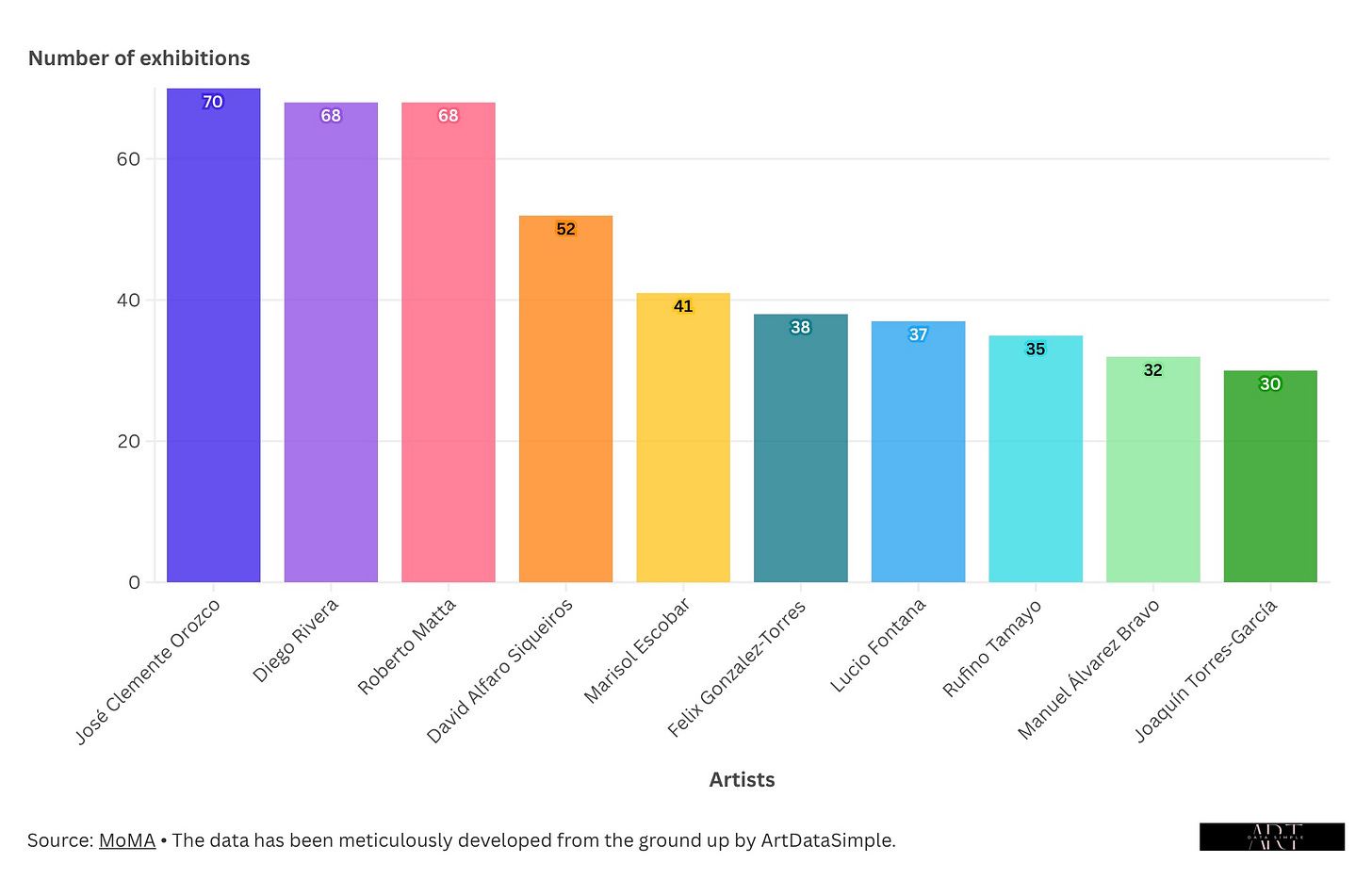
Artists with solo exhibitions at MoMA and PS1
The museum's interest in showcasing Latin American art began with a solo exhibition by Diego Rivera in 1931, to whom 80 year later MoMA organized a new solo exhibition in 2011. Among the 390 artists from 15 Latin American countries, another 26 have exhibited their work individually. Like Rivera, his compatriot Manuel Álvarez Bravo has had two solo exhibitions, in 1971 and 1997. It is important to note the museum's limited promotion of female artists, as only four have had solo exhibitions: the Brazilian artists Mira Schendel and Lygia Clark, the Argentine Liliana Porter at MoMA, and the Guatemalan Regina José Galindo, who recently closed an exhibition at PS1.
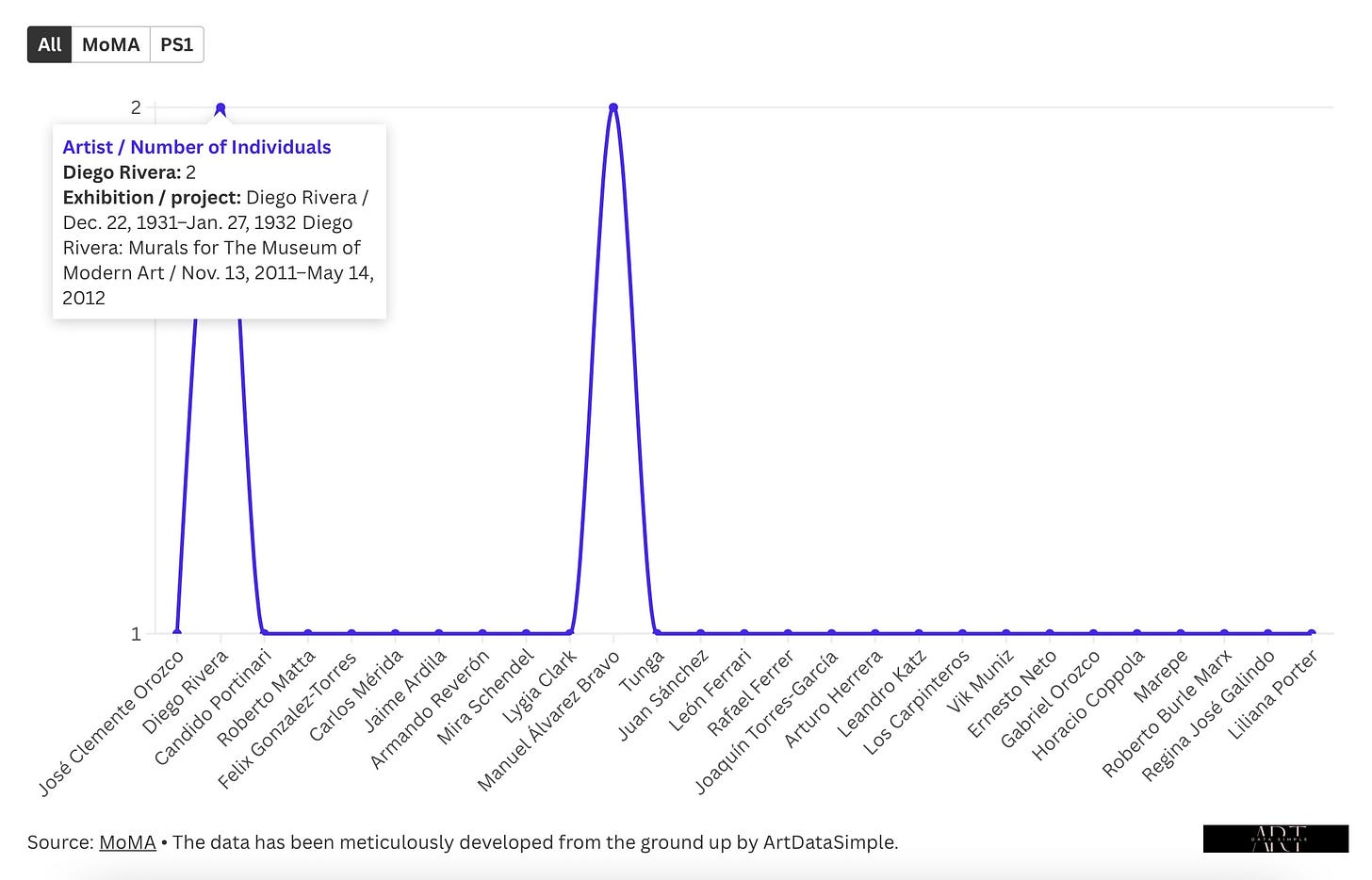
10 artists with the most works in the collection
Only one is still active: the Mexican Gabriel Orozco. Finally, we can once again see how gender parity continues to be conspicuous by its absence. Thus, we only find two female artists on this occasion: the Venezuelan Gego and the Brazilian Mira Schendel.




